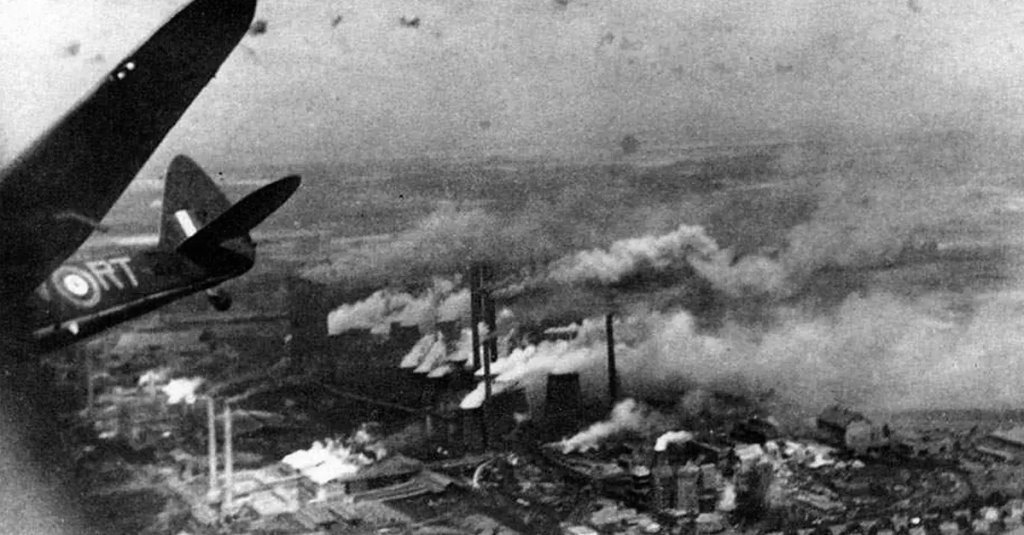

The largest bombing raid of World War II was the British attack on Cologne, Germany, on May 30, 1942, when over 1,000 bombers were sent to destroy chemical and machine tool facilities there in a single-night attack.
The bombing raid took place before American forces had built up large concentrations of forces in Europe. Britain in 1942 was benefiting from American industry, but its bomber strength was still limited from the lingering effects of the Battle of Britain as well as the toll of regular combat sorties over German-held territory.

So the English forces had only 416 first-line bombers ready for missions. Air Marshal A.T. Harris, the Royal Air Force’s top officer for strategic bombing, had to decide how to use these bombers to best effect. Every mission launched resulted in lost planes Britain was struggling to replace, but every mission canceled allowed Germany to produce more of its own arms, including bombers and fighters.
Harris came up with a plan for getting more bombs on target while, hopefully, sacrificing fewer bombers. He reasoned that there were a fixed number of defenders at each target and a relatively fixed number of German interceptors that could reach a site during a bombing raid. He could trickle out his bombers over multiple missions at one target, limiting the number of bombs he would have to drop on each target, but that would allow the defenders to focus on fewer planes at once.

Or, he could change bomber doctrine and send an overwhelming number of bombers at once. Sure, this would draw the fire of every interceptor and every air defense crew within range, but they would have a limited time in which to attack the bombers. So, instead of German defenders having to fend off a few dozen or even a couple hundred planes, getting to rest and refit, and then doing it again, the defenders would have to defend against many hundreds of planes all at once.
He put together a plan to send not only the 416 first-line bombers, but also all available second-line and even training bombers, to Cologne, Germany, where workers made industrial goods and chemicals. Together, these units would send 1,046 bombers against the target in just 90 minutes. Prime Minister Winston Churchill approved the mission.
And so, on May 30, 1942, Operation Millennium was launched, and the over 1,000 planes dropped almost 1,500 tons of bombs on the target, damaging 600 acres of the city and crippling industrial output from Cologne. A bomb burst, on average, every two seconds. Britain lost 40 bombers, meaning that over 1,000 bombers made it back from Operation Millennium.

But the raid was not without criticism then or now. Strategic bombing in early-World War II was not accurate, and night raids had to be launched against cities, not against pinpoint targets. Many British bombers in 1942 were still using the Course Setting Bomb Sight from World War I, and even those with Britain’s Mark XIV bomb sight could not target an individual building.
Approximately 45,000 Germans were made homeless by the bombing raid, and 469 were killed. But, for Allied leaders, the juice was worth the squeeze. After all, Britain had suffered similar losses in single-night bombing raids against London in 1941, so they weren’t about to cry themselves to sleep over dead German civilians. And, even better for Britain, those 40 planes lost in the raid amounted to 4 percent casualties.
Royal Air Force bombing missions over Germany would, over the course of the war, result in an average of 5 percent losses per mission, so suffering 4 percent losses while wiping out the target in a single mission was an intriguing prospect. As Churchill telegraphed to President Franklin D. Roosevelt, “I hope you were pleased with our mass air attack… there is plenty more to come.”
No other single attack would have as many bombers as the attack on Cologne, but raids against targets like Dresden in 1945 would feature over 700 bombers.
